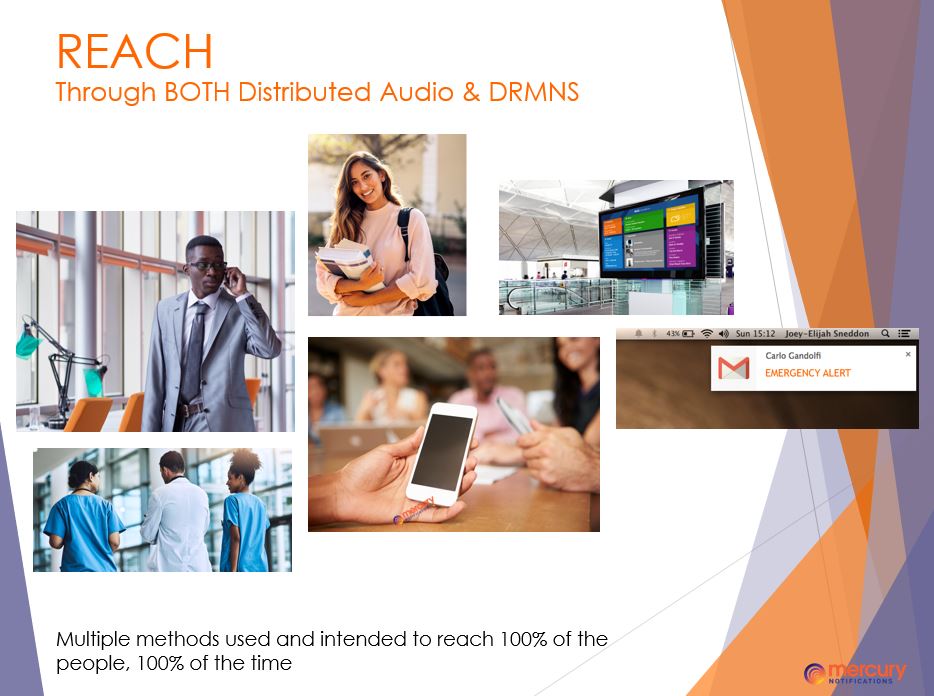When it comes to preparing a risk assessment for your campus or facility, whose responsibility is it to utilize best practices to ensure the life-safety of students, faculty, employees, occupants and visitors?
We can all agree that safety is paramount, particularly in the case of a building evacuation, active shooter scenario or other non-fire emergencies. Consider what would happen if manufacturers arbitrarily built life-safety equipment without consideration of established codes and standards or meeting a risk assessment analysis?
For example, what if the product you think is safe does not meet proper fire, electrical or other standards for life safety? What if it lacks essential elements for performance that ensure system functionality?
In considering mass notification that responds to the emergency communication requirements of your risk assessment plan, having a product-agnostic, “governing” body like NFPA or IBC that works with the UL standards committees sets the bar for safety requirements, allows stakeholders to have a higher degree of trust to demonstrate that the system has been tested to perform and execute to a life safety standard.
Meeting codes and standards should be a level of entry for all manufacturers of mass notification systems (MNS). Having this serve as an acceptable degree of safety can ensure that campuses ultimately invest in on-premises and wide area speakers and distributed recipient mass notification system (DRMNS) solutions that work and perform properly. Further, it is important that a MNS system be inspected according to a life safety standard.
As you consider your students, faculty, employees and visitors, compliance should never be optional or “value engineered” out of the project. Choosing products and solutions that meet codes and standards, such as NFPA 72, International Building Code (IBC/IFC) and the UL 2572 standard, is one way to ensure best practices and better outcomes.
What Is the Standard?
UL 2572 is the standard for mass notification systems. It sets forth the requirements and criteria for how the control units of emergency notification systems will be designed and tested. This ensures that physical components of the system, including but not limited to, all applications, hardware, software, triggers, initiating devices, and Fire Alarm Control Panel integration are used in life-safety situations.
AHJ’s will require acceptance of a mass notification system through the design process, installation and final acceptance. It is important that your mass notification system meets code and standard for AHJ acceptance.
In addition, requirements cover discrete electrical control units, communication units, transport products which manipulate the data packets, interfaces, and accessories for mass notification systems to be employed in accordance with the life safety standards and practices.
The standards committee and building code professionals clearly distinguish mass communication, emergency audio and all-call or emergency paging systems from mass notification. These other systems are not designed or engineered to meet the intent of the standard for mass notification, nor do they meet the acceptance of a risk assessment for life safety that require code and standard.
Life Safety and Building System Integration
The ease by which a mass notification system can be integrated, along with all the important features and benefits, all play an important role in ensuring that the emergency communication system you put in place will work, including where and when you need it, to direct everyone to safety.
Other “must have” requirements that truly separate mass notification from overhead emergency paging systems and mass communication systems are the expectations for the system. A mass notification system must provide an end-to-end solution that incorporates all the necessary distribution methods to reach 100% of the audience, 100% of the time. This is done through redundant methods, including, but not limited to, supervision, reporting, redundancy, monitoring, and fire alarm control unit (FACU) integration; all to ensure the functionality and performance of the system during crisis.
The Challenge for End Users of Mass Notification Systems
A real challenge for end-users when using a mass notification system is the ability to seamlessly use and integrate an easy solution among various manufacturers, APIs and control platforms. Traditionally there have been two or more manufacturers coordinating to create one system that provides the three-prongs for mass notification (distributed audio [including wide area audio], digital notification (text, tweet, SMS, phone calls, digital signage, etc.), FACU integration and control, along with intuitive system interface.
To ensure a great MNS , make sure the system can meet the challenges raised in your risk assessment plan, as well as meet codes and standards, while providing seamless integration with all life safety components. The system should also contain hardware and software that delivers a congruent DRMNS for a complete solution, including multi-building, campus integration and cloud services. Mercury Notifications can help you protect your people, property, and brand.
Looking to the Future of Mass Notification
As adoption of mass notification continues, intelligent MNS systems can be used to collect valuable data that enables facility, life safety and security professionals to make decisions that positively impact the safety of everyone.
Considering this, your mass notification system just may be the most important investment you make to ensure the safety and security of your people, property, and brand. mercurynotifications.com














